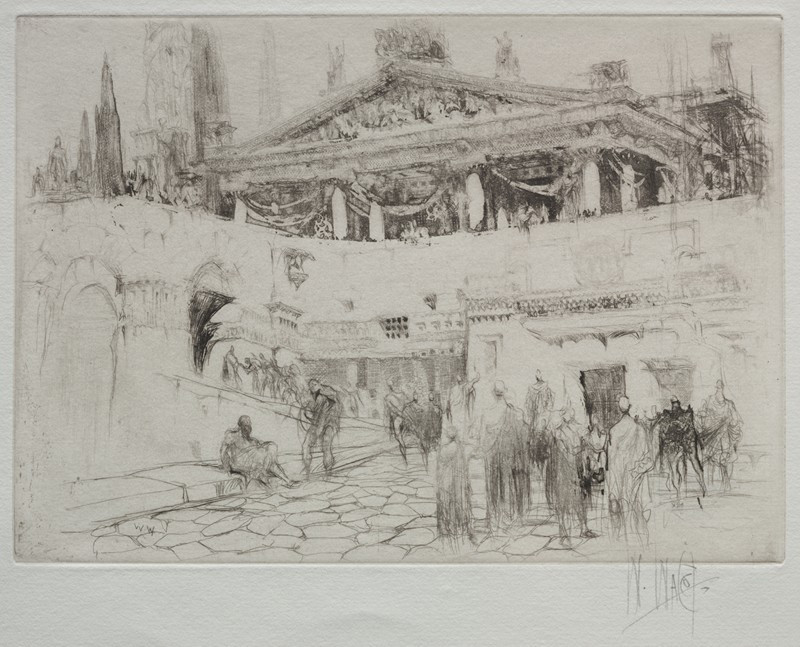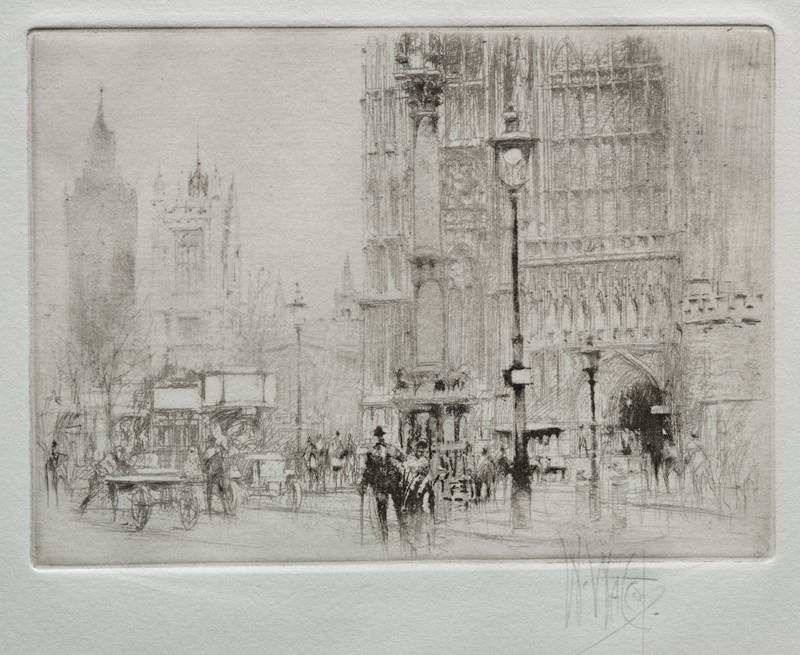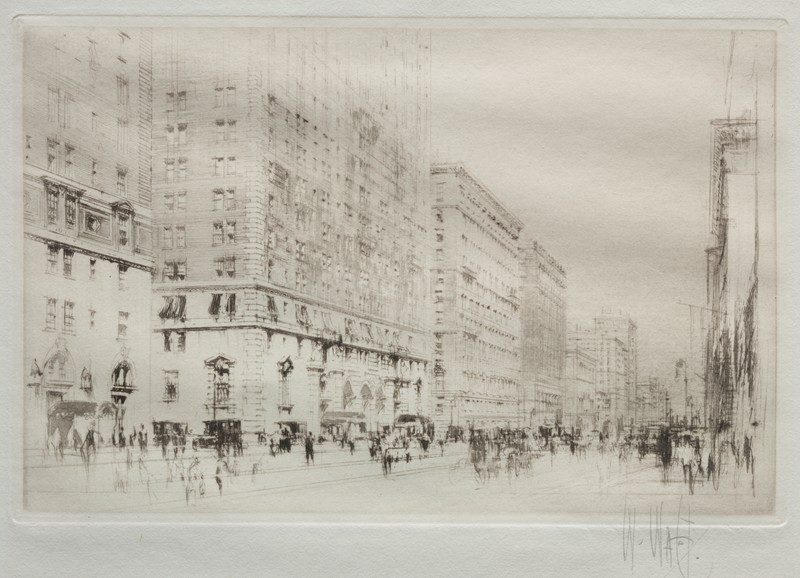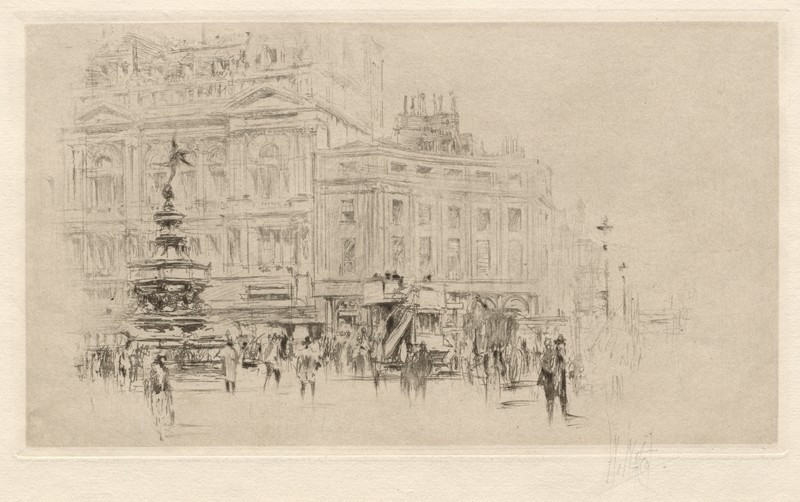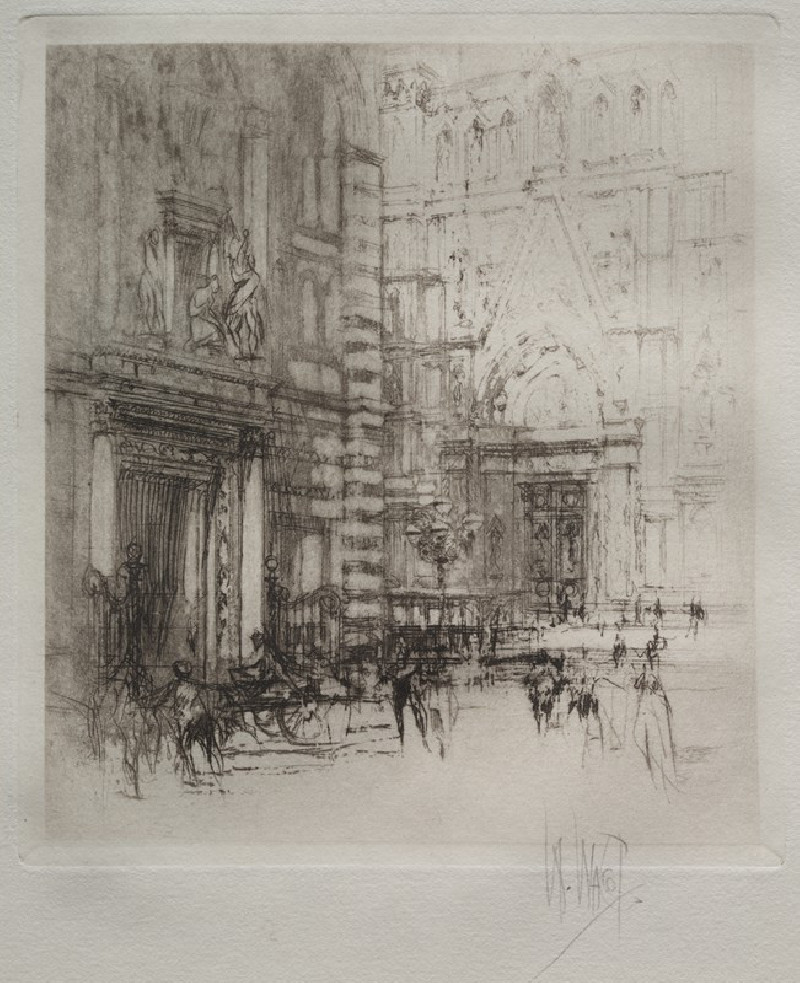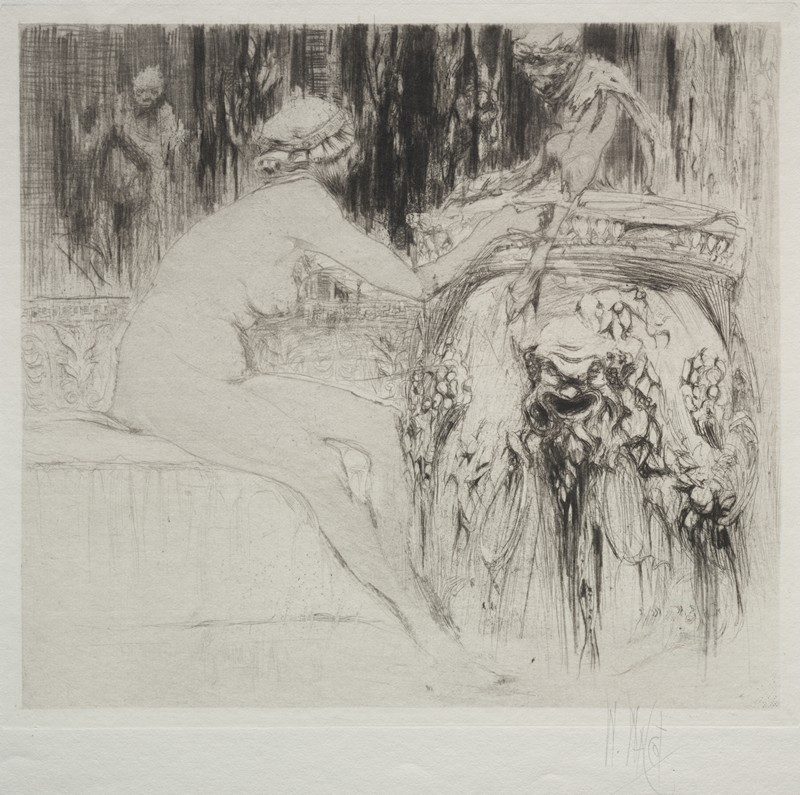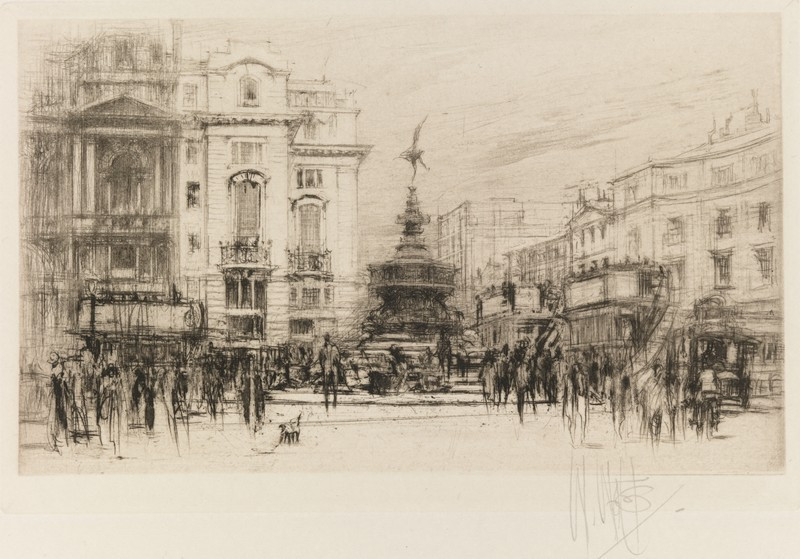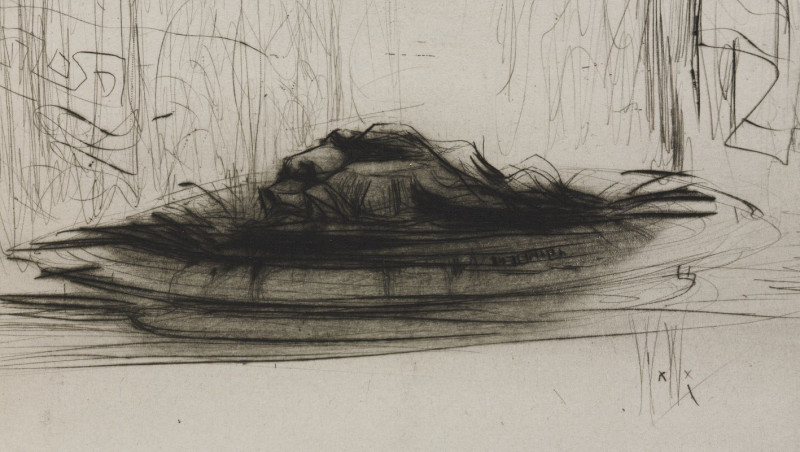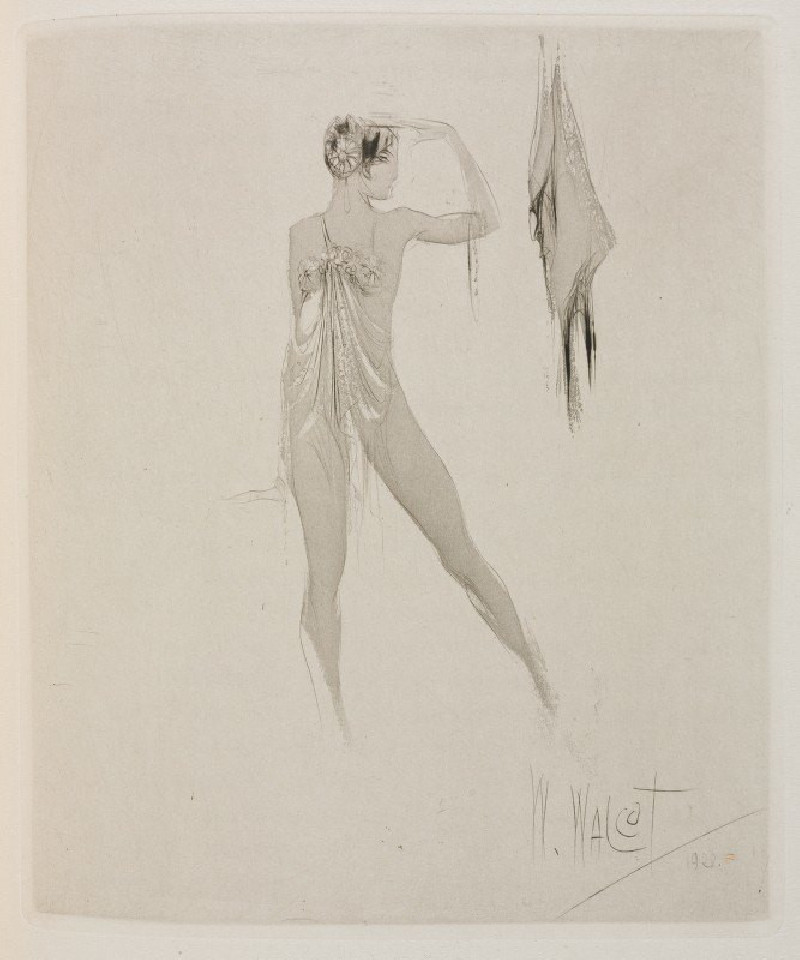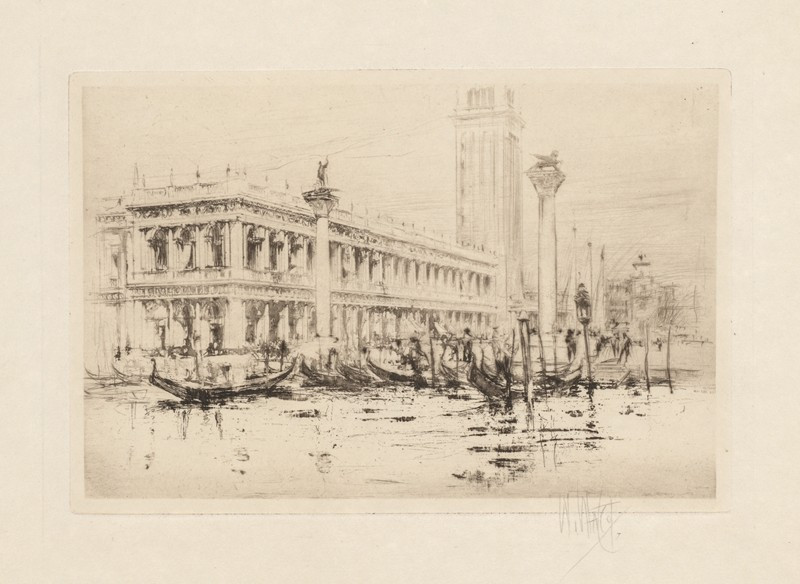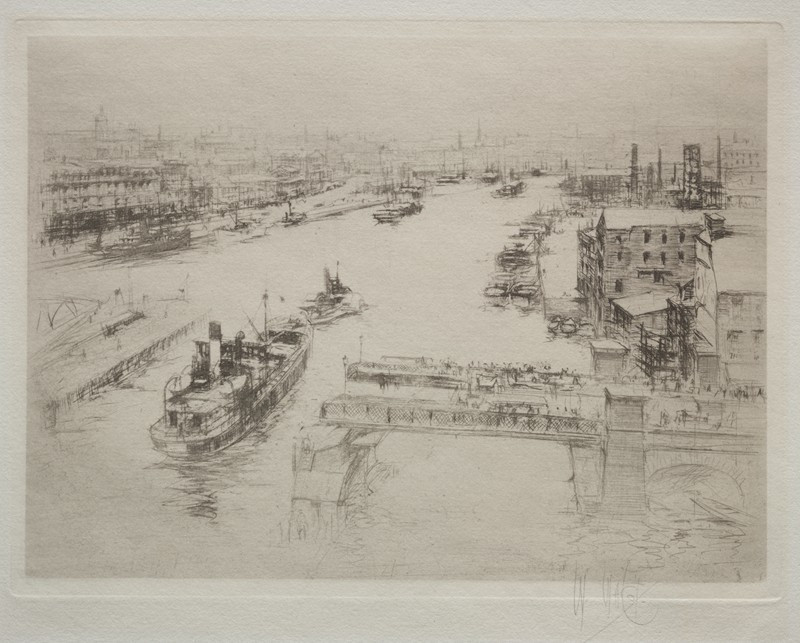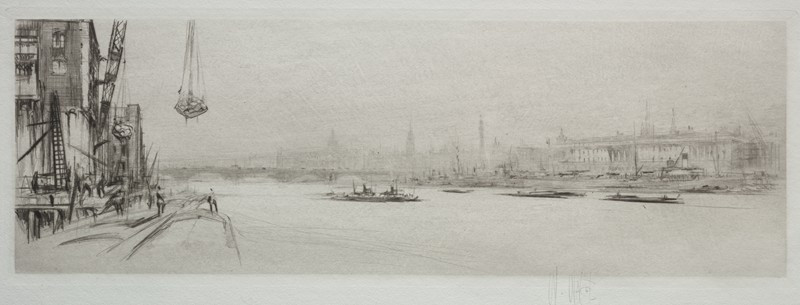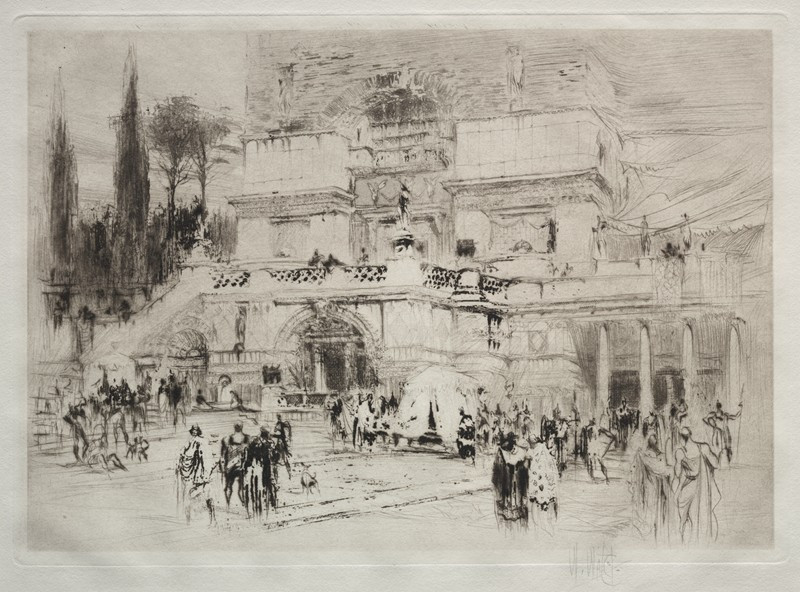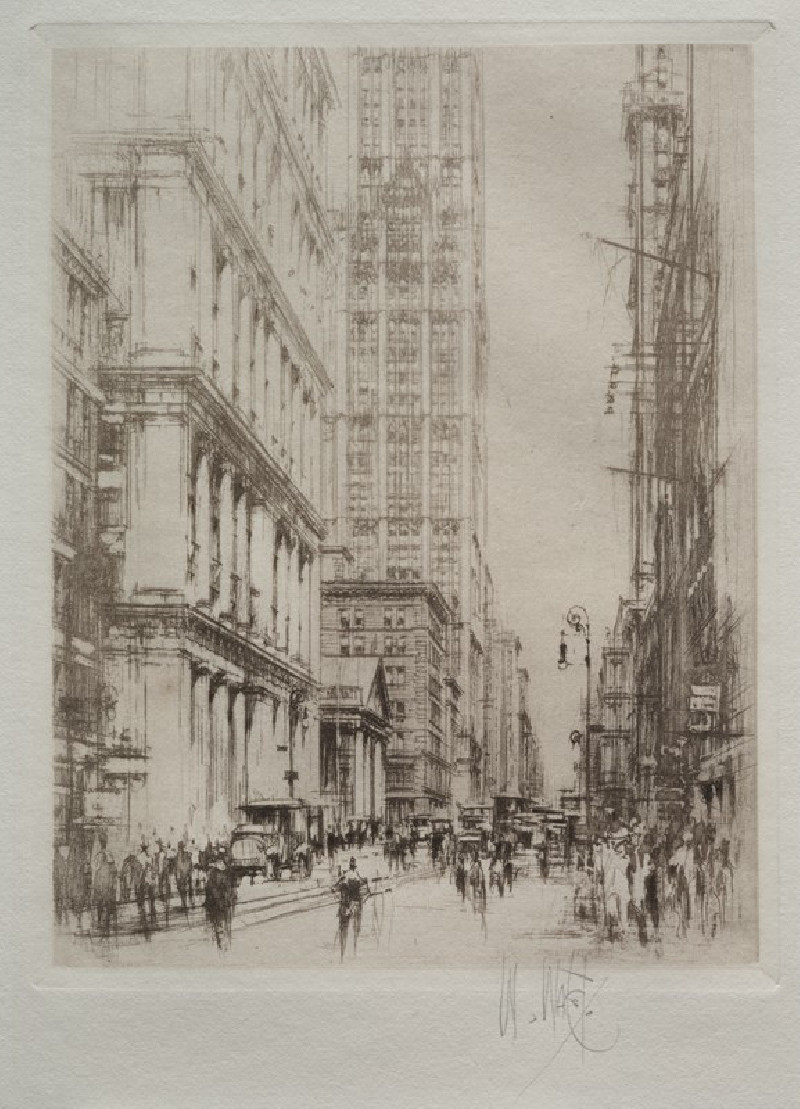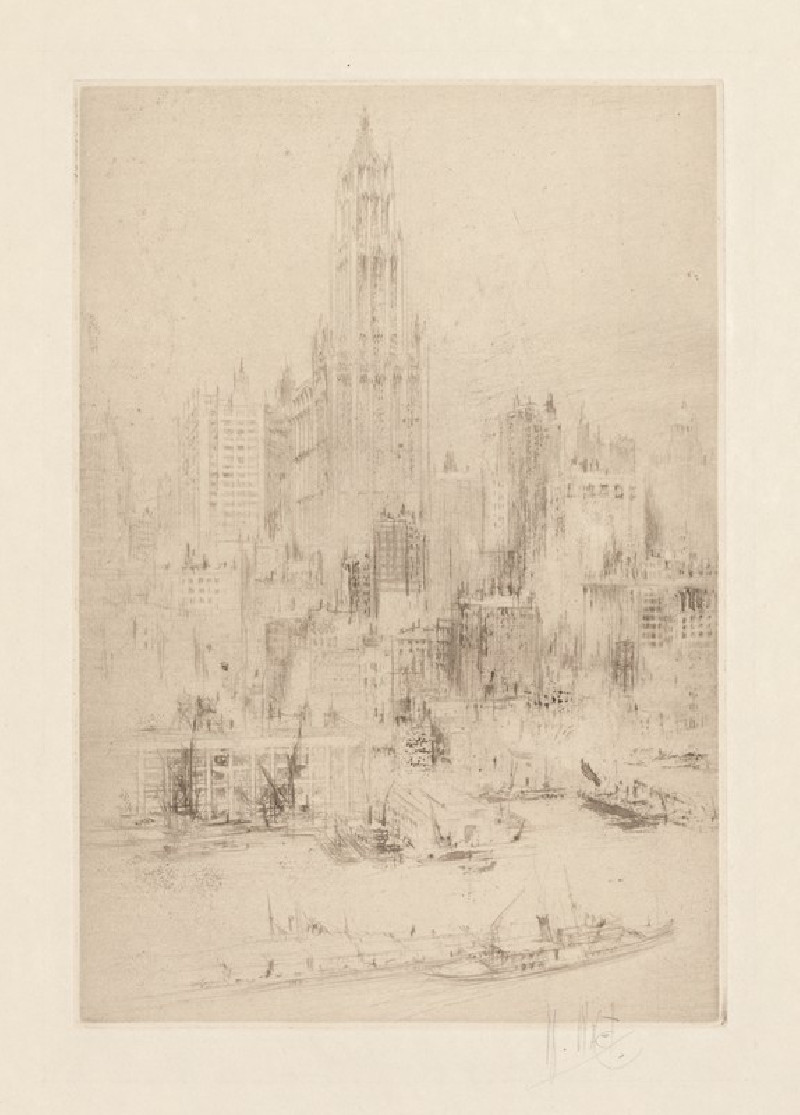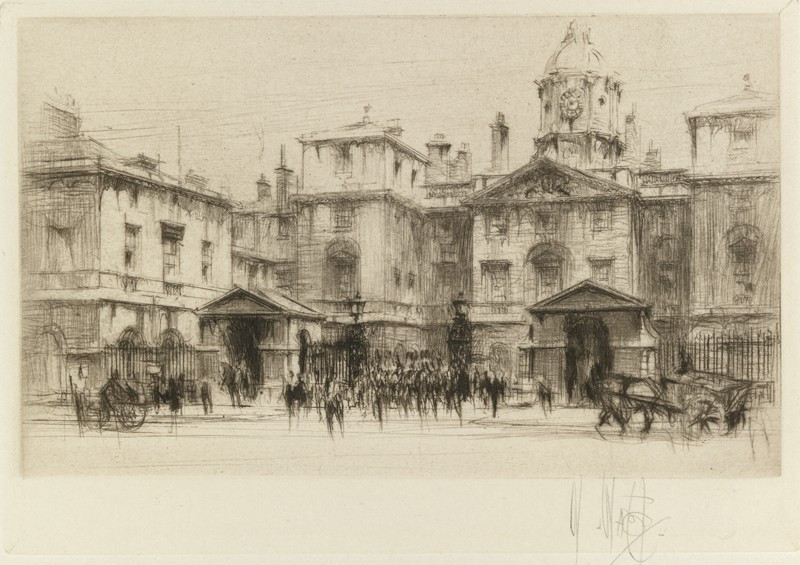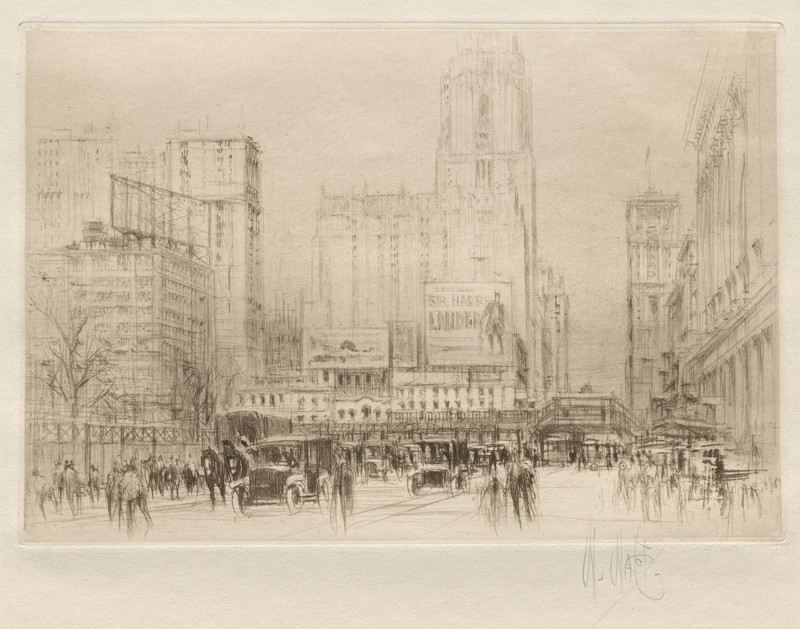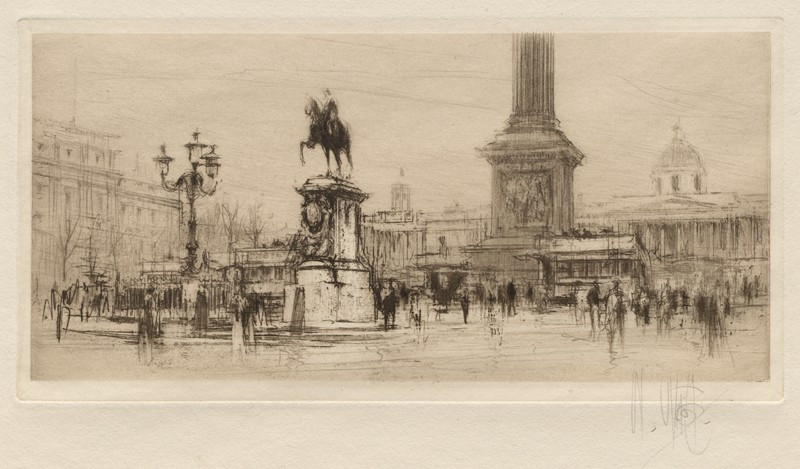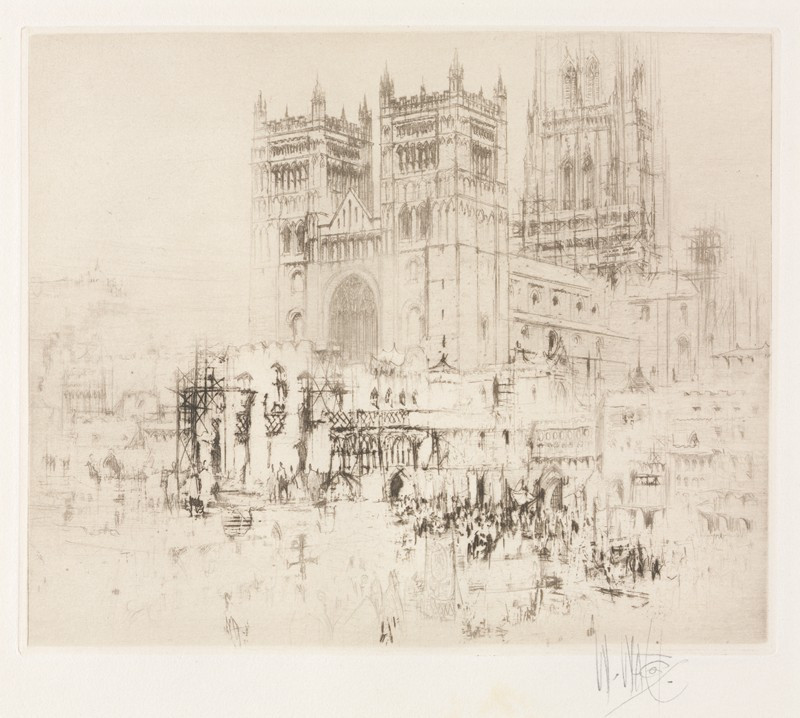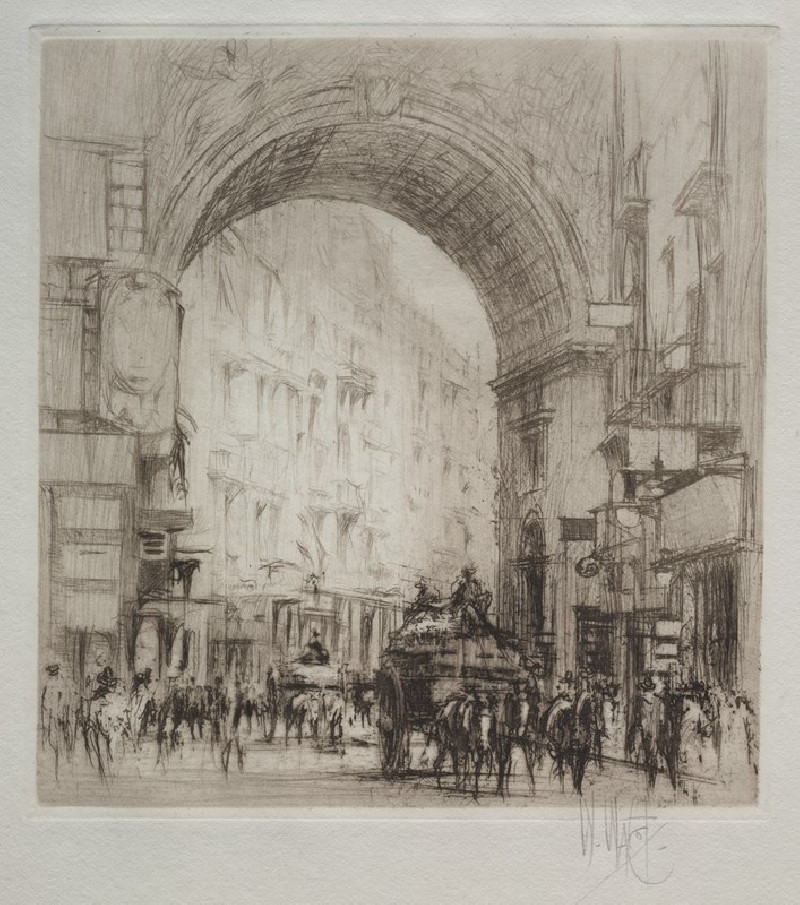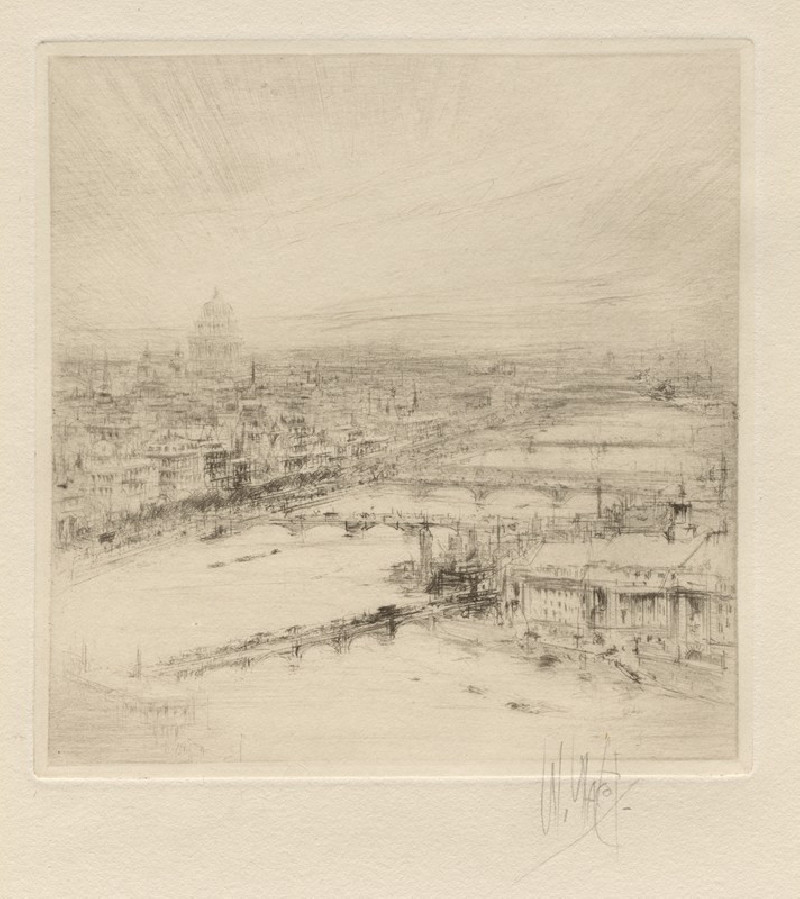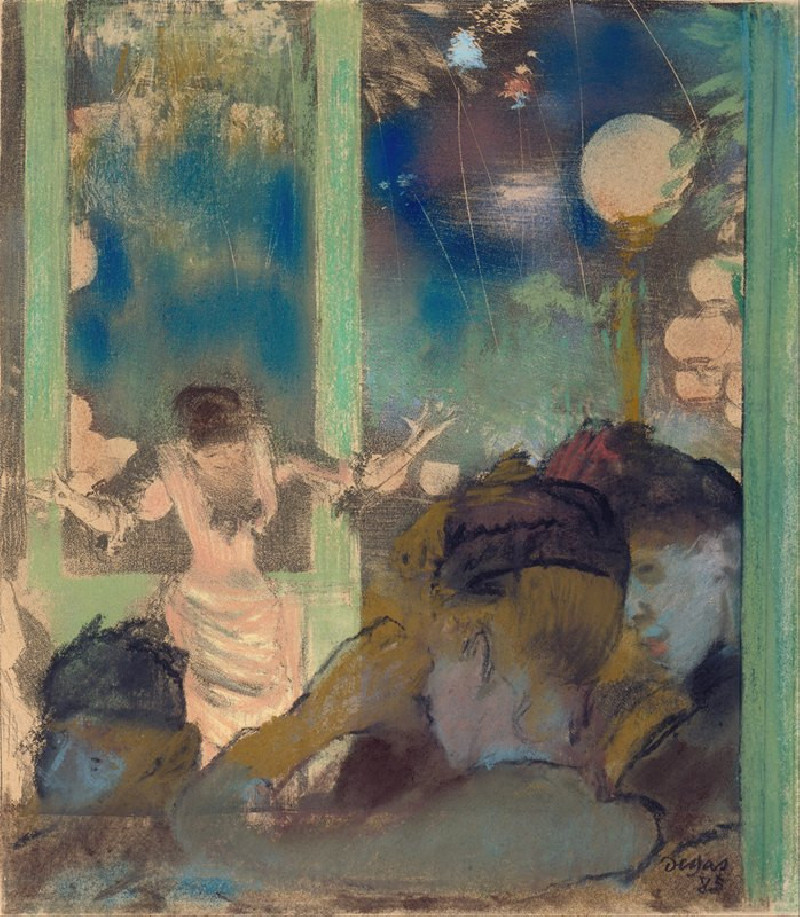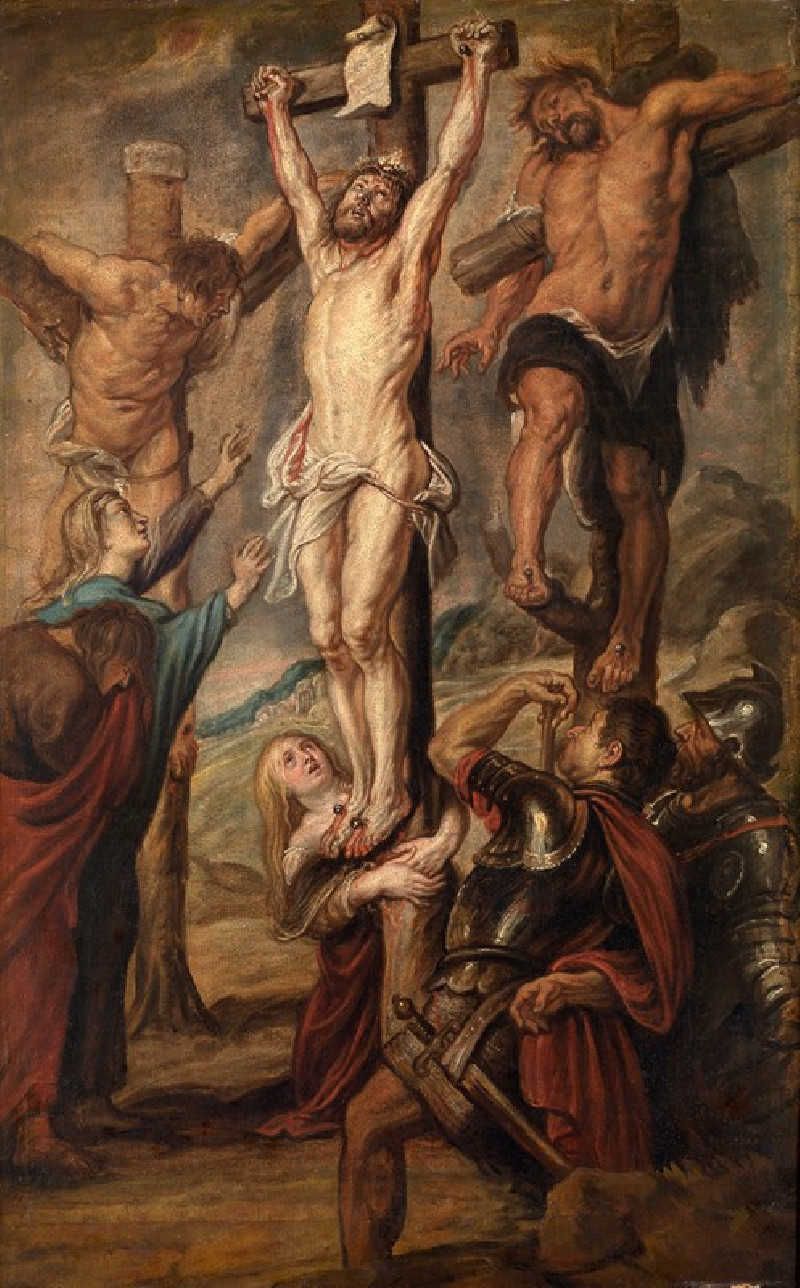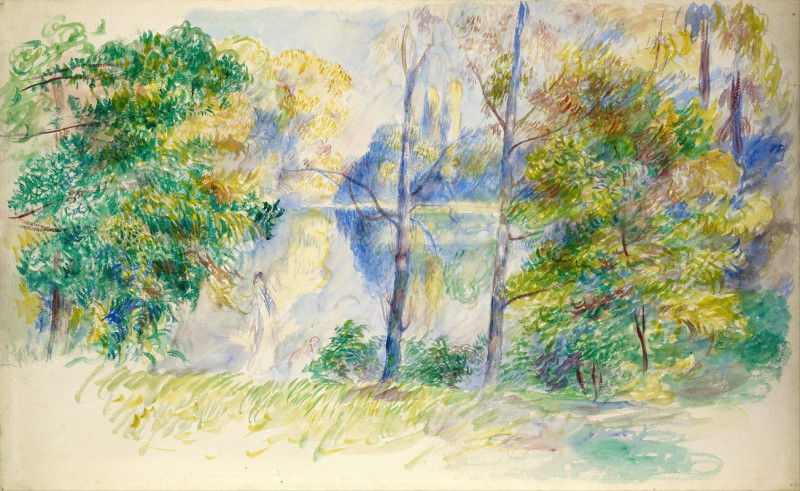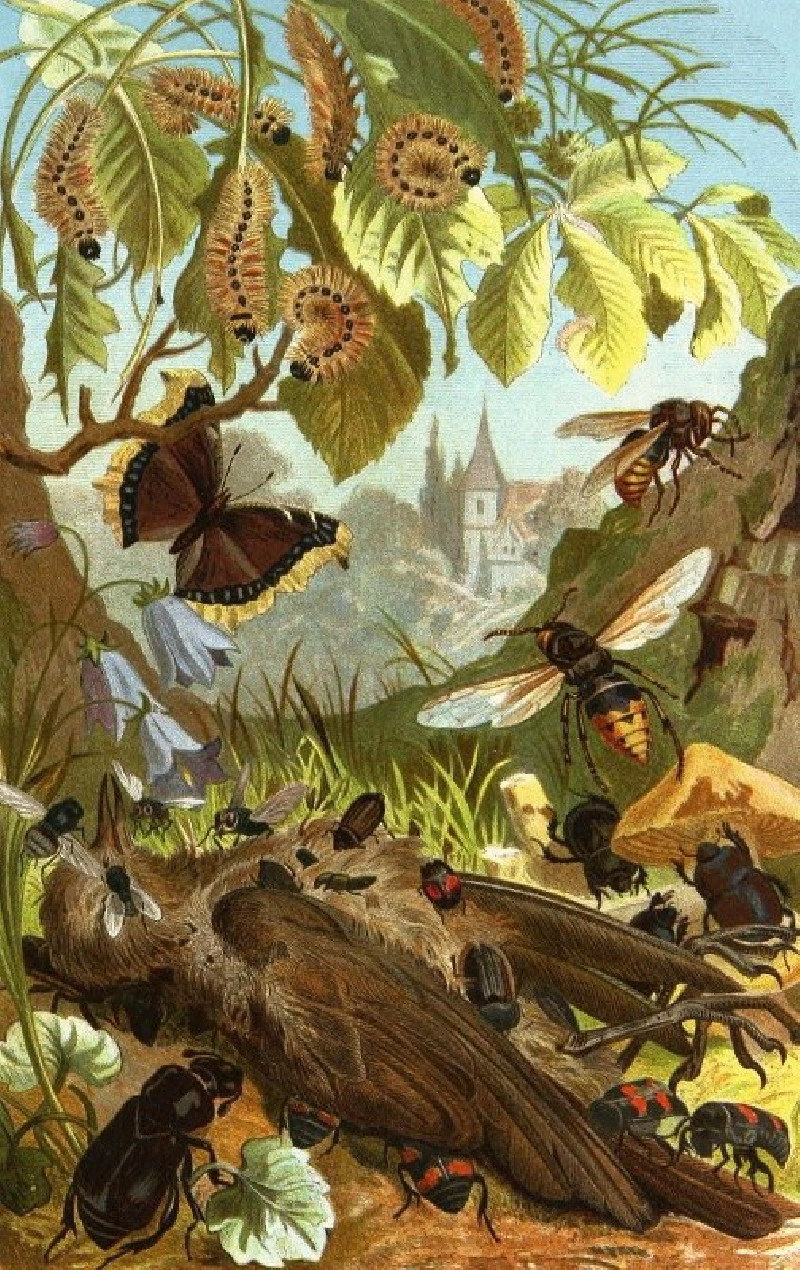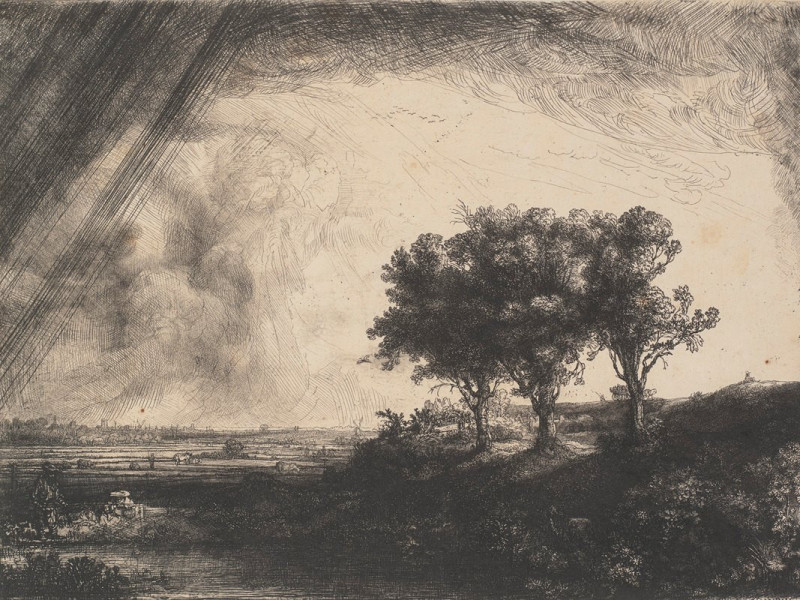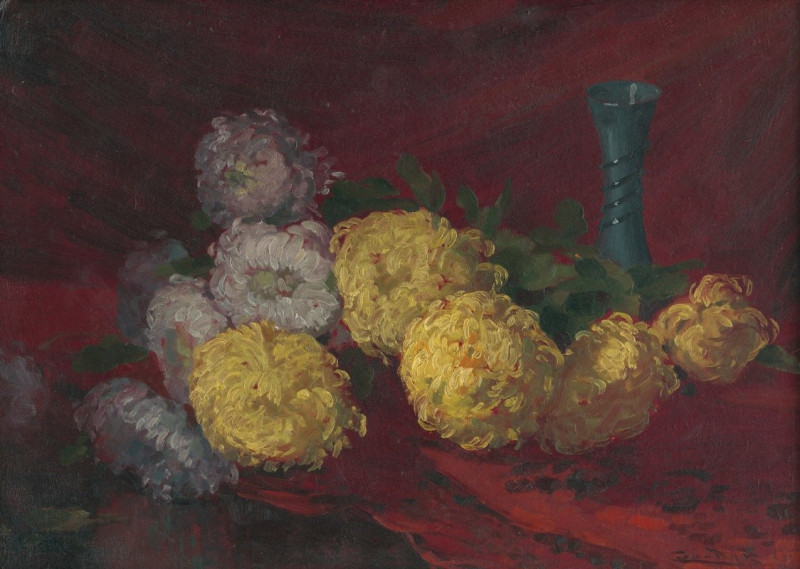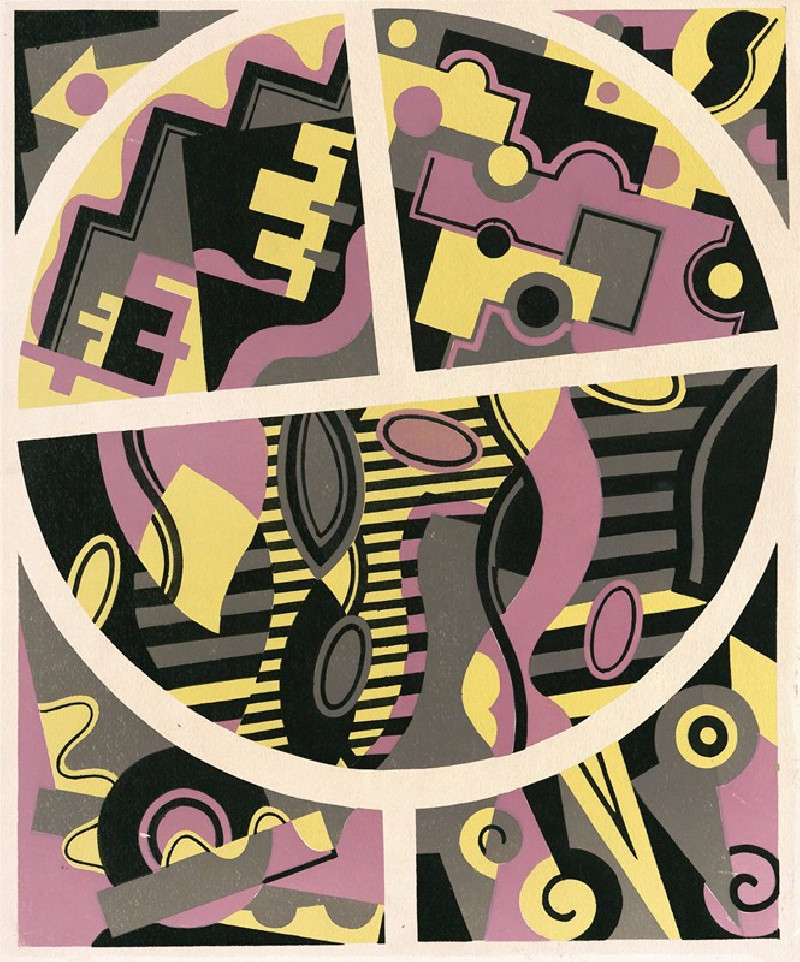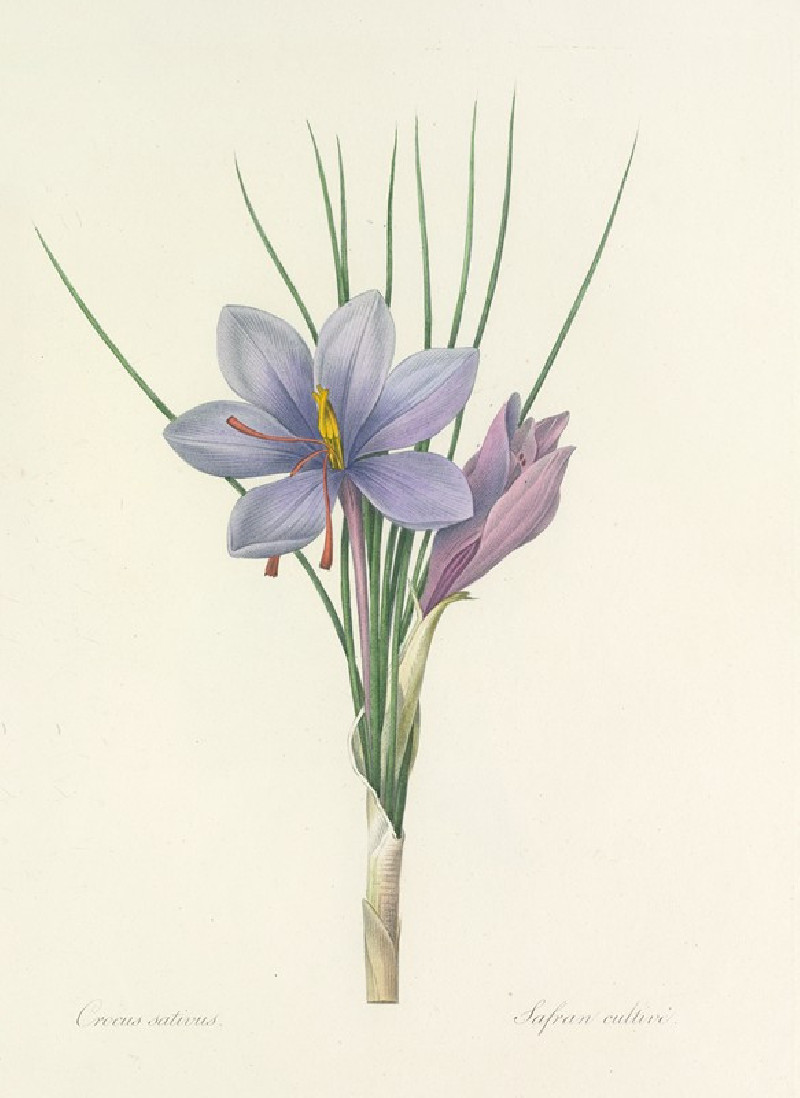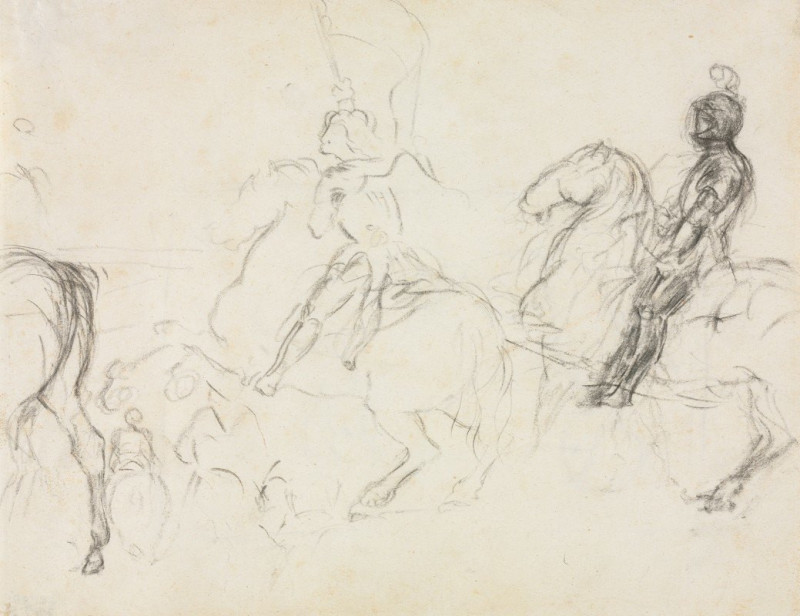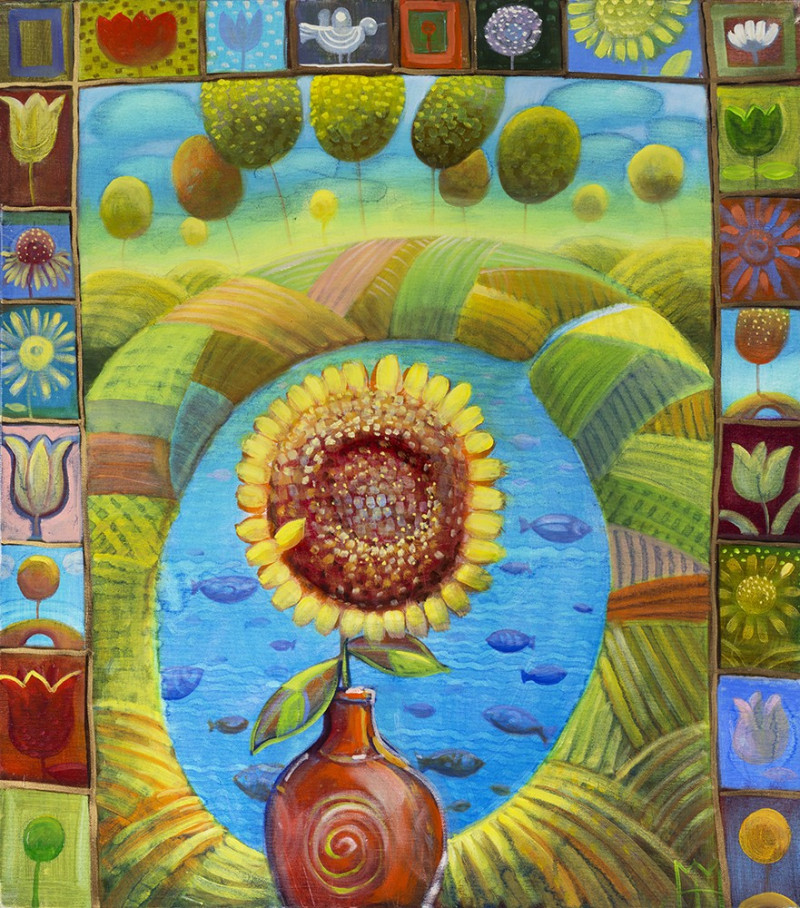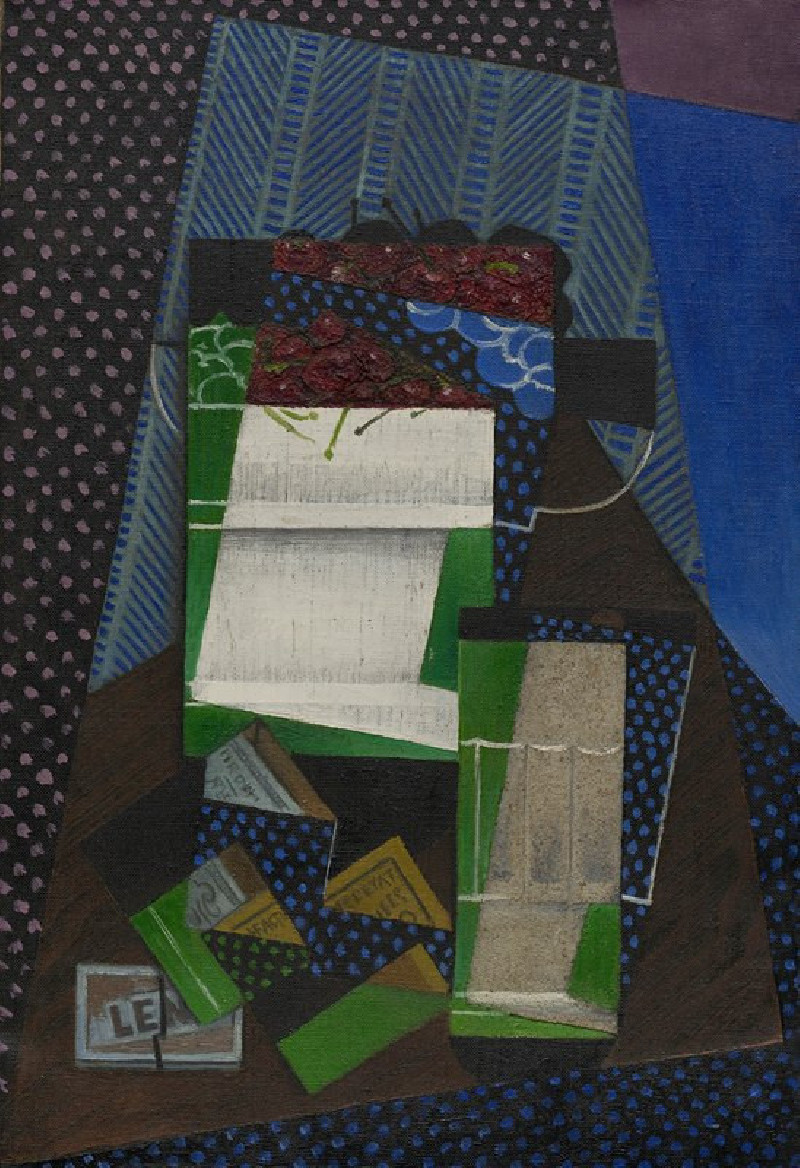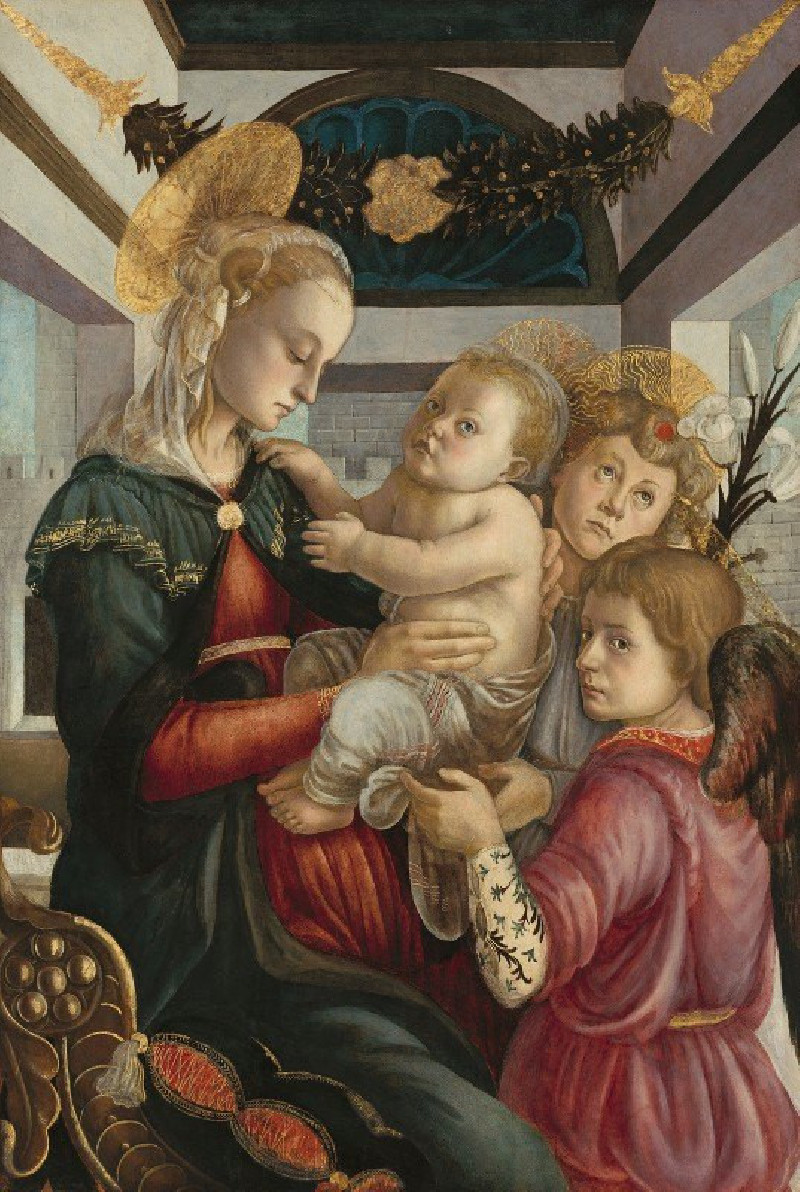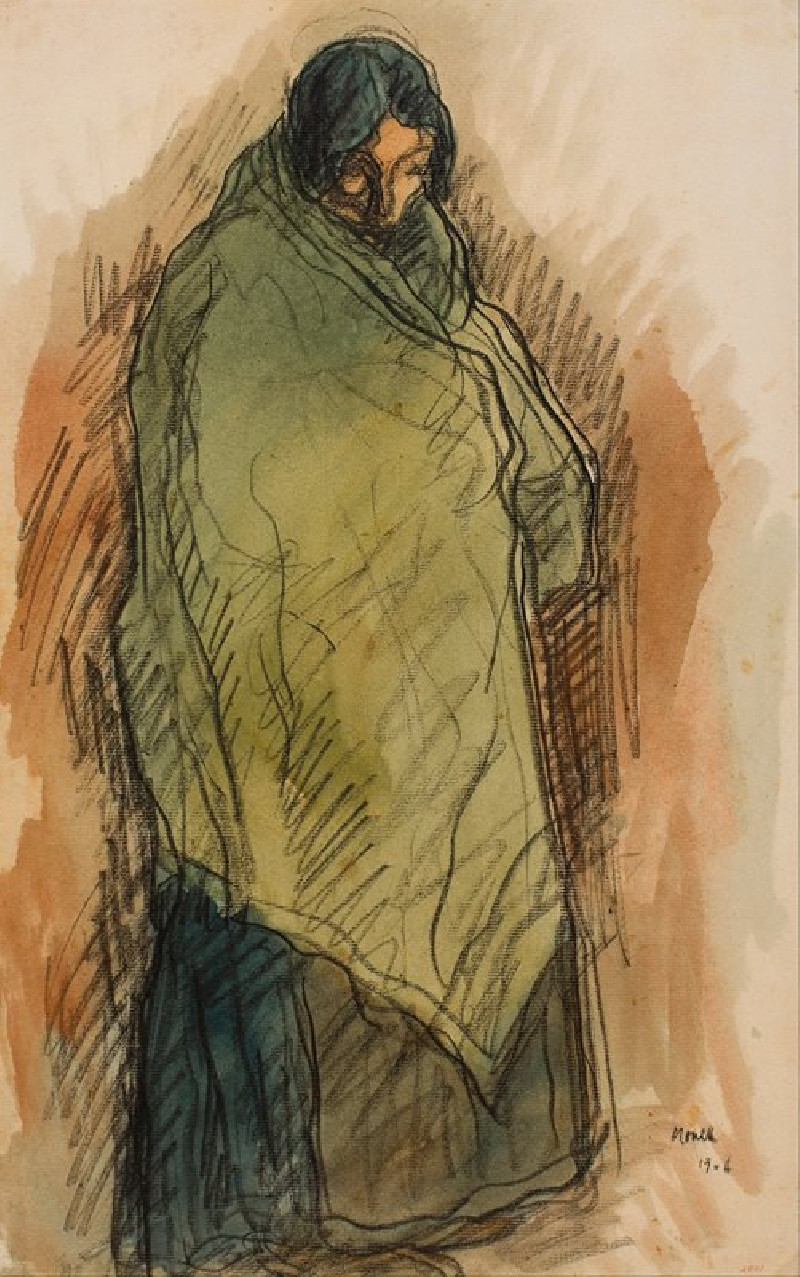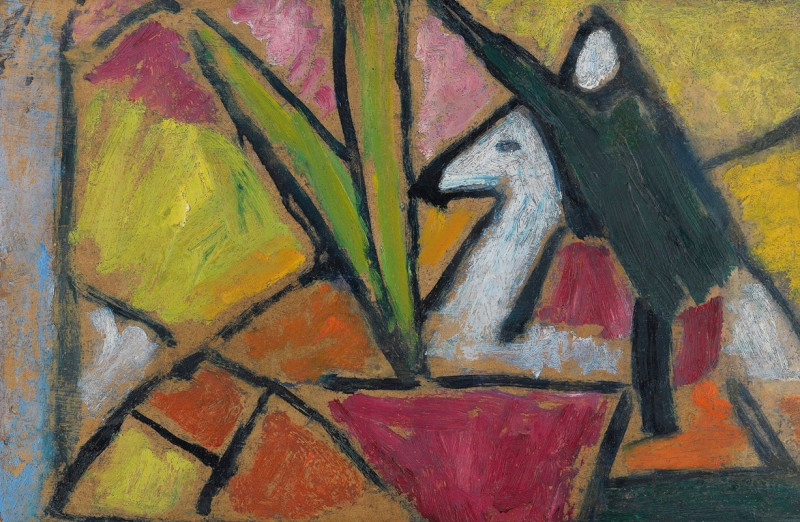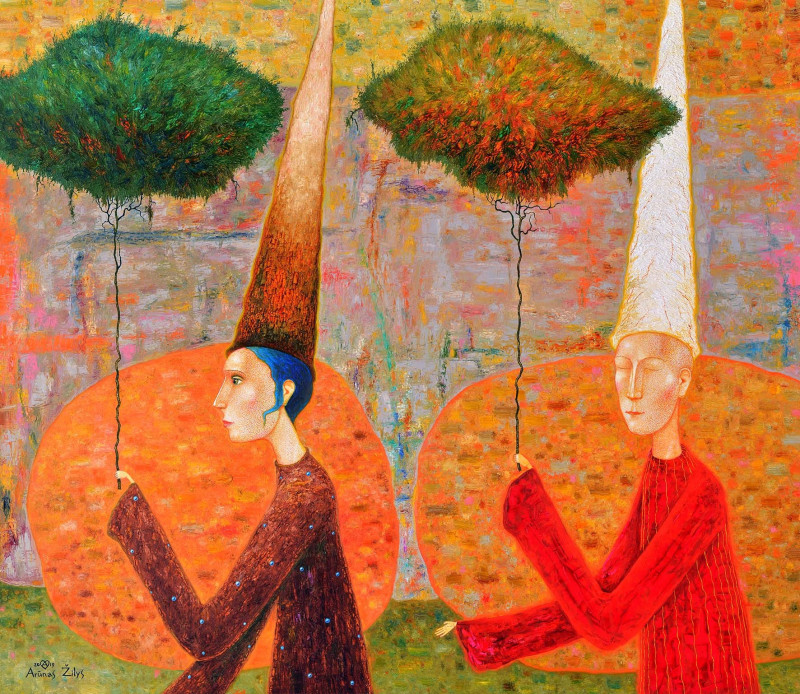The First Wooden Temple of Jupiter (1918)
Technique: Giclée quality print
Recommended by our customers
More about this artwork
William Walcot’s remarkable etching, "The First Wooden Temple of Jupiter," masterfully captures the grandeur of ancient architecture intertwined with the bustling life of its era. Created in 1918, this work illustrates a vivid scene set around a majestic temple, believed to be an imaginative recreation of one of the earliest temples dedicated to Jupiter in Rome.In the foreground of this piece, various figures animate the setting, illustrating the daily life and diverse activities of the period. We see individuals and groups in mid-motion: some walking, others gathered in discussion, and a few on horseback, hinting at the vibrancy and social complexity of the time.The temple itself, a central element in this etching, is portrayed with an impressive attention to detail. Despite its title indicating the structure’s wooden origins, Walcot gives it a weighty, enduring quality through his intricate linework and shading. The temple's broad steps lead up to a portico teeming with figures, possibly part of a ceremony or day-to-day interactions, indicating its role as a focal point for communal and religious life.The artist’s use of light and shadow, as well as the meticulous depiction of architectural elements—columns, pediments, and friezes—showcase his skills as both an architect and artist, capable of drawing the viewer into a long-past world through the tip of his etching tool.Walcot’s work is not merely an artistic representation; it is a portal to the imagination, encouraging viewers to contemplate the splendor and stories of ancient civilizations.
Delivery
Returns
William Walcot RE was a Scottish architect, graphic artist and etcher, notable as a practitioner of refined Art Nouveau (Style Moderne) in Moscow, Russia (as Вильям Францевич Валькот). His trademark Lady's Head keystone ornament became the easily recognisable symbol of Russian Style Moderne. In 1920s–1930s, he concentrated on graphic art and was praised as "the best architectural draftsman" in London.

